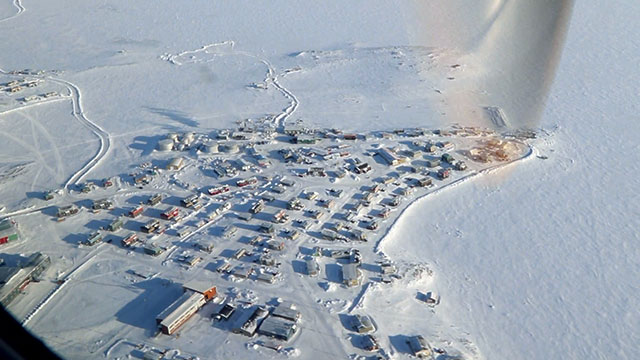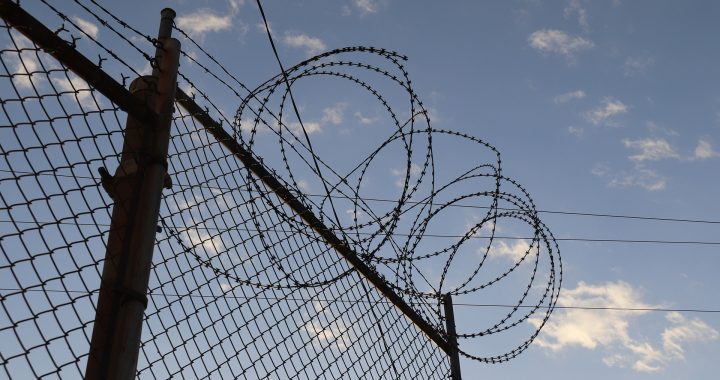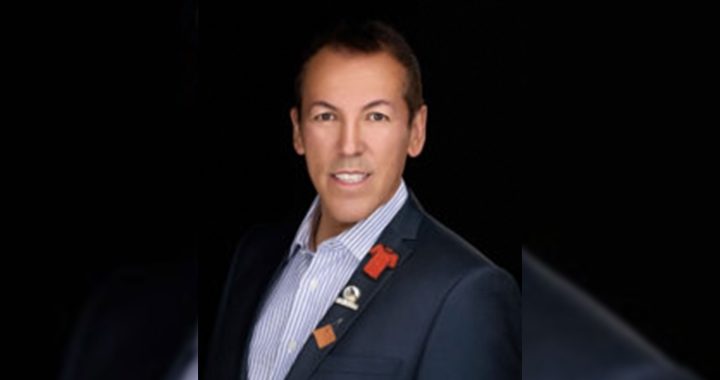
Just over two weeks after reporting the region’s first case of COVID-19, the Inuit territory of Nunavik now has almost a dozen people who have tested positive for the novel coronavirus.
On April 13, local health officials reported the 10th active case in Puvirnituq, a community of roughly 1,500 located on the northeastern shore of Hudson Bay in sub-arctic Quebec.
“One case is currently hospitalized at the Inuulitsivik Health Centre and the nine other cases were already in isolation when they received their diagnosis,” said Minnie Grey, executive director at the Nunavik Regional Board of Health and Social Services (NRBHSS).
Grey told APTN News that the community has the medical supplies it currently requires but, like many other remote or isolated communities, overcrowding makes dealing with an outbreak difficult.
“We’ve always had this issue of housing shortage and overcrowding, and when you have a pandemic like this and see cases popping up it can be a challenge.”
The cases in Puvirnituq are all linked, “meaning that they were close contacts to each other,” NRBHSS said in a release.
“We’re trying to ensure that people understand that very close contacts mean household members, intimate partners, individuals who provide personal care to others in a non-medical setting, and individuals that have had direct contact with an infectious person’s body fluids, for example who have had someone cough in their face,” Grey explained over the phone from Kuujjuaq.
Nunavik has entered a new phase when it comes to how cases are confirmed, she said.
Health officials will now confirm cases by “epidemiological link,” meaning that when an individual displays COVID-19 symptoms and has been identified as a “very close contact” of a confirmed case they will automatically be considered as a confirmed case and will no longer be tested.
Those who display symptoms but are not a very close contact of a confirmed case will still require testing.
The surge in positive tests makes Puvirnituq one of the hardest hit Indigenous communities in the country. There is also one resolved case in Salluit, which brings Nunavik’s total number of reported confirmed cases to 11.

(The community of Puvirnituq as seen from the air. Photo: APTN file)
A timeline of COVID-19 in Nunavik
There are 14 fly-in communities in Nunavik, which is one of four regions that make up Inuit Nunangat, the historical homeland of Inuit in Canada. Three of these communities were under a boil-water notice as of April 8, the local Kativik Regional Government (KRG) reported online.
Salluit confirmed the region’s first case on March 28. In the following days, restrictions on non-essential public gatherings were introduced as well as a region-wide curfew that called on all Nunavimmiut to remain inside from 9:00 p.m. to 6:00 a.m.
The Quebec government also moved to established police checkpoints to protect Nunavik as well as seven other northern and eastern regions of the province.
Nunavik confirmed its second case on April 1, and officials introduced a full lockdown two days later, suspending non-essential flights in and out the region, though essential cargo and medical flights continued.
“The measure allows local emergency response teams to keep the current situation under control and give everyone time to prepare for any potential increase in active cases,” said Director of Public Security Jean-Pierre Larose in a release.
“Upon returning to the region, everyone will have to self-isolate for 14 days, by staying home, in their room as much as possible,” KRG added.
On the same dame day, the 2nd Canadian Ranger group mobilized to help Nunavik combat the infectious pathogen which was declared a pandemic on March 11.
“The Rangers will prepare triage points to facilitate the work of healthcare personnel,” the federal government explained in an online post.
The Rangers are permanent inhabitants of Nunavik’s 14 communities, which Grey said is why they were asked for help.
“They know people in their community. They’re the ones that are able to communicate well and work with the community,” she said.
The Rangers are currently training on effective use of personal protective equipment, Grey added, explaining that they are expected to help enforce physical distancing regulations, set up temporary testing facilities if needed, and even patrol the countryside to ensure people out on the land are abiding by physical distancing and the ban on non-essential gatherings.
Puvirnituq continued reporting new cases as the Rangers mobilized: three on April 5, one each on April 10 and 11, three on April 12, and one on April 13.
According to the federal government’s Tuesday morning update, Quebec had 13,557 confirmed cases of COVID-19 – over 50 per cent of the entire country’s 26, 163 confirmed cases – and 360 deaths.
At present, Grey said the plan is to try and limit the potential spread to the other 12 Nunavik communities.
“We’re asking everyone, like everywhere else, to practice all the measures that have been put in place,” she said.











Are these numbers under the Quebec numbers? it doesn’t show this on covid map of Canada nor are they reporting this??